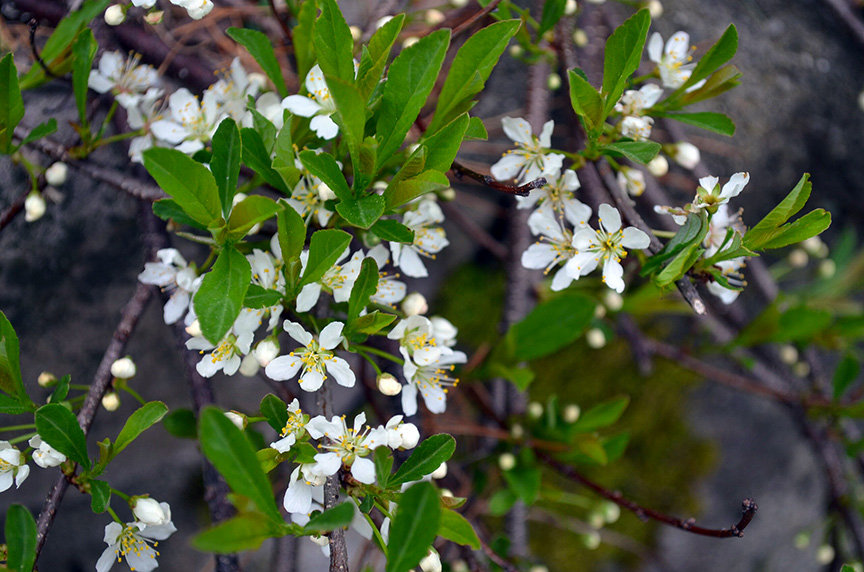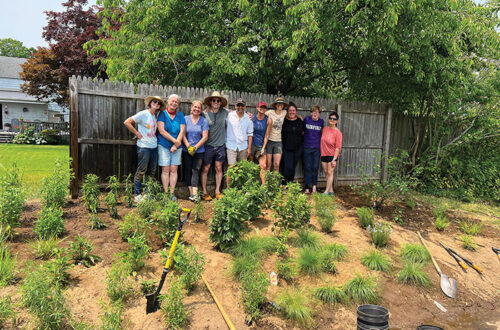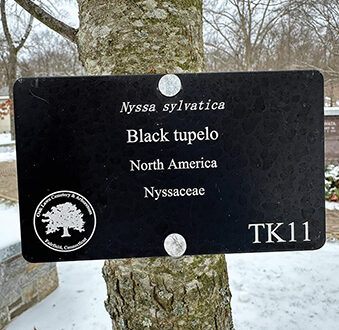Sand Cherry (Prunus pumila) is a deciduous shrub native to North America. In the U.S. it can be found on the East Coast from Maine to Pennsylvania. It tends to grow in sandy locations such as beaches and dunes.
Prunus pumila var. depressa ‘Gus Mehlquist,’ is a sprawling variety of sand cherry that was an Arnold Selects introduction in 2022. Its name honors University of Connecticut plant breeding and biology professor Gustav Mehlquist (1906-1999).
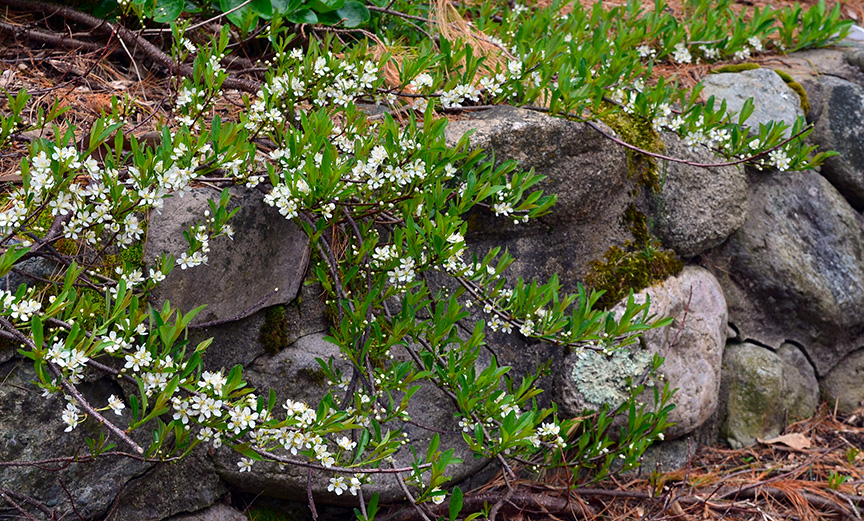
Dainty white flowers emerge in spring.
The Arnold Arboretum describes its discovery as follows: “On May 4, 1990, Harvard University research scientist David Boufford and Robert Nicholson, then Arboretum assistant plant propagator, found an extremely low-growing sprawling sand cherry (Prunus pumila var. depressa) along the bank of the Connecticut River in Cheshire County, New Hampshire.”
A division was collected and brought to the Arnold Arboretum where it eventually thrived as a groundcover in the landscape beds adjacent to the Dana Greenhouses.
Prunus pumila var. depressa ‘Gus Mehlquist’ is a spreading, low-growing variety of sand cherry that can grow 3′ a year once it’s established. A prostrate variety, it stands only 6-12″ tall.
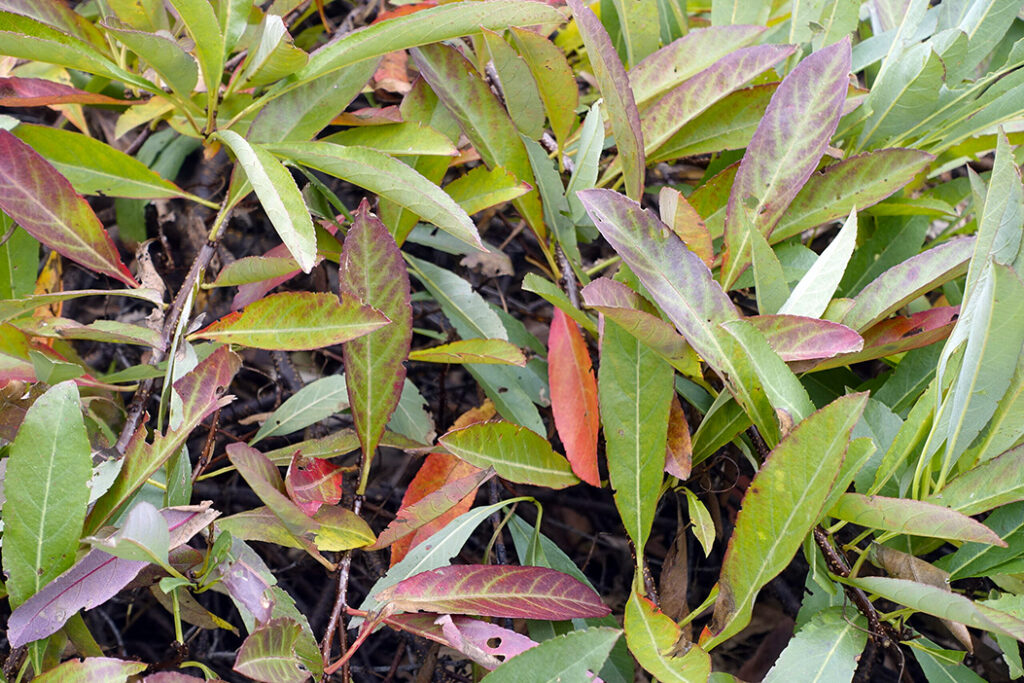
Fall colors include red, yellow and orange.
Its small, white, five-petalled flowers are borne in clusters in April and May. The elliptical foliage is green on top and silvery underneath. The leaves turn shades of scarlet, orange, crimson, maroon and yellow in the fall. The colors are better when it’s planted in full sun.
It produces blue-purple-black fruit.
New stem growth is cinnamon brown but turns gray with age. They typically have prominent lenticels.
With ornamental foliage, attractive flowers, fruit and good form, it has four-season interest.
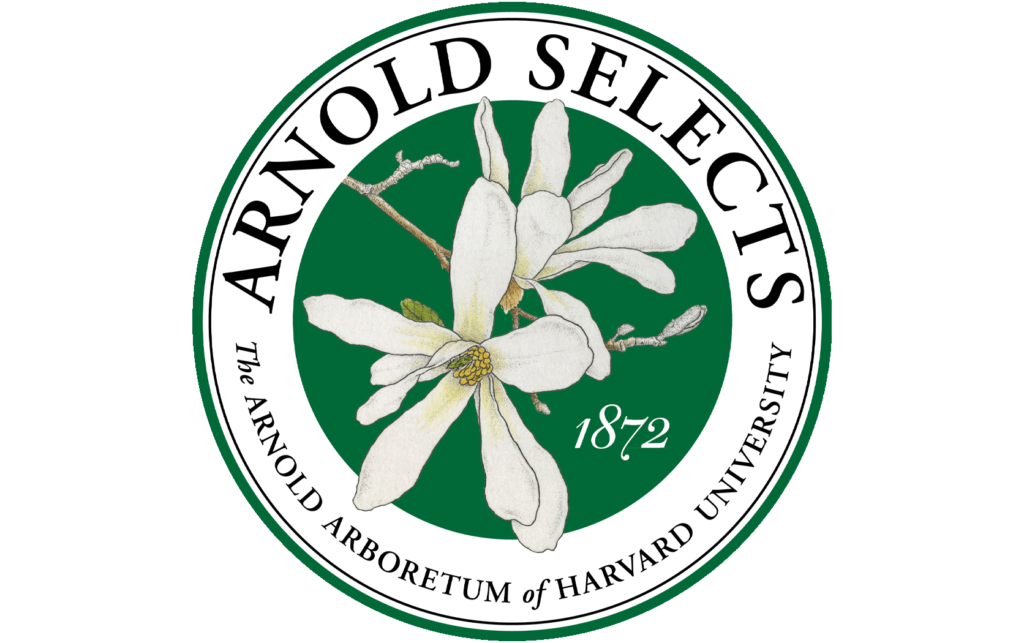
It is adaptable to both dry and wet sites and is hardy in Zones 3-8. It’s not picky about the type of soil and can withstand transplanting and animal browse.
In the landscape it can be used on banks and slopes, as an edging, in rock gardens and above walls where it can cascade down.
The Connecticut Conservation District says it’s a fine spreading groundcover that’s easy to grow with good drainage. Its low growth form protects it from salt, wind and dehydration. On top of that it’s disease resistant and suppresses weeds.
They also tout its value to wildlife including native bees, butterflies, skippers and songbirds, including Eastern bluebirds, cardinals and cedar waxwings.
Dan Furman at Cricket Hill Garden in Thomaston is growing it. “So far I have found it to be an excellent nursery plant and am eager to see how it performs in the landscape. I will be planting several as a ground cover plant in a part sun bed as soon as I can find some time. Two-year-old plants grown from cuttings bloomed profusely this spring. Several plants were chomped down by rodents over the winter and have regrown with vigor this spring.”
– Will Rowlands
